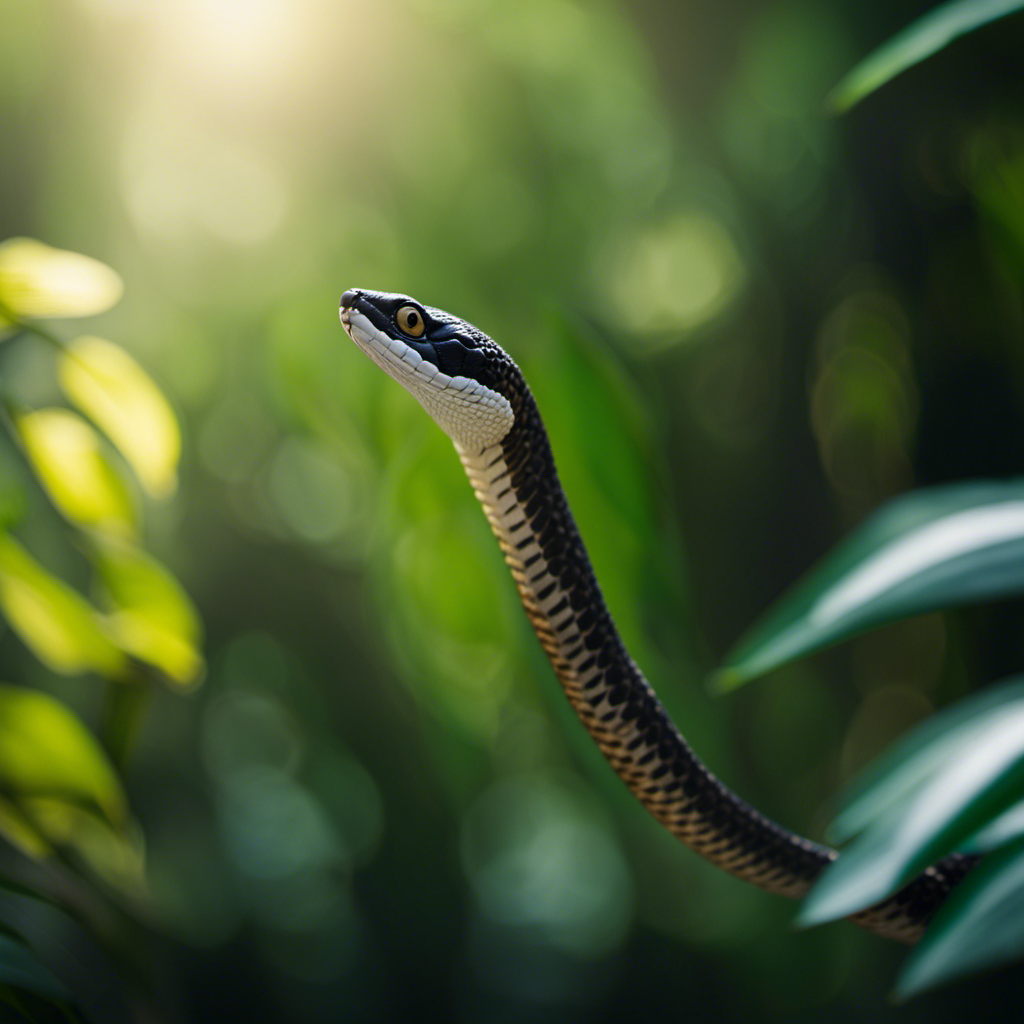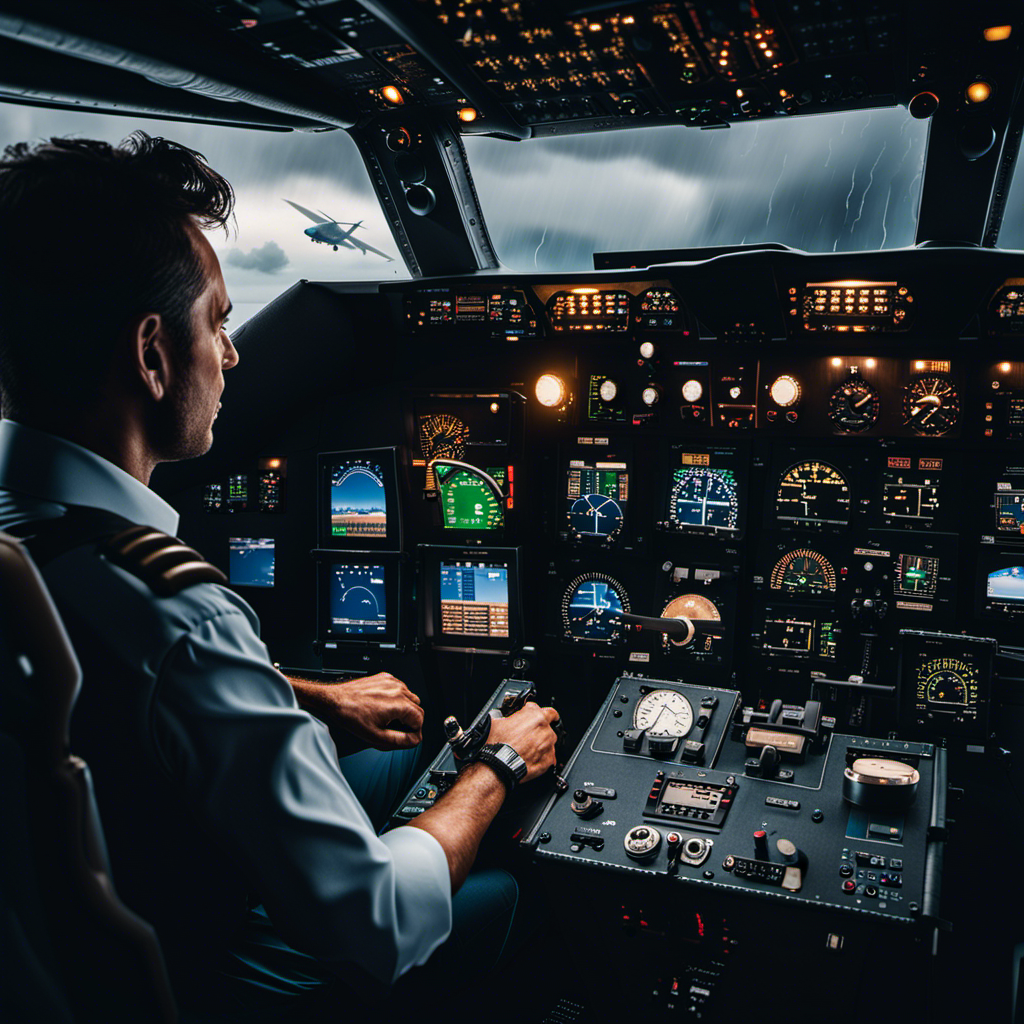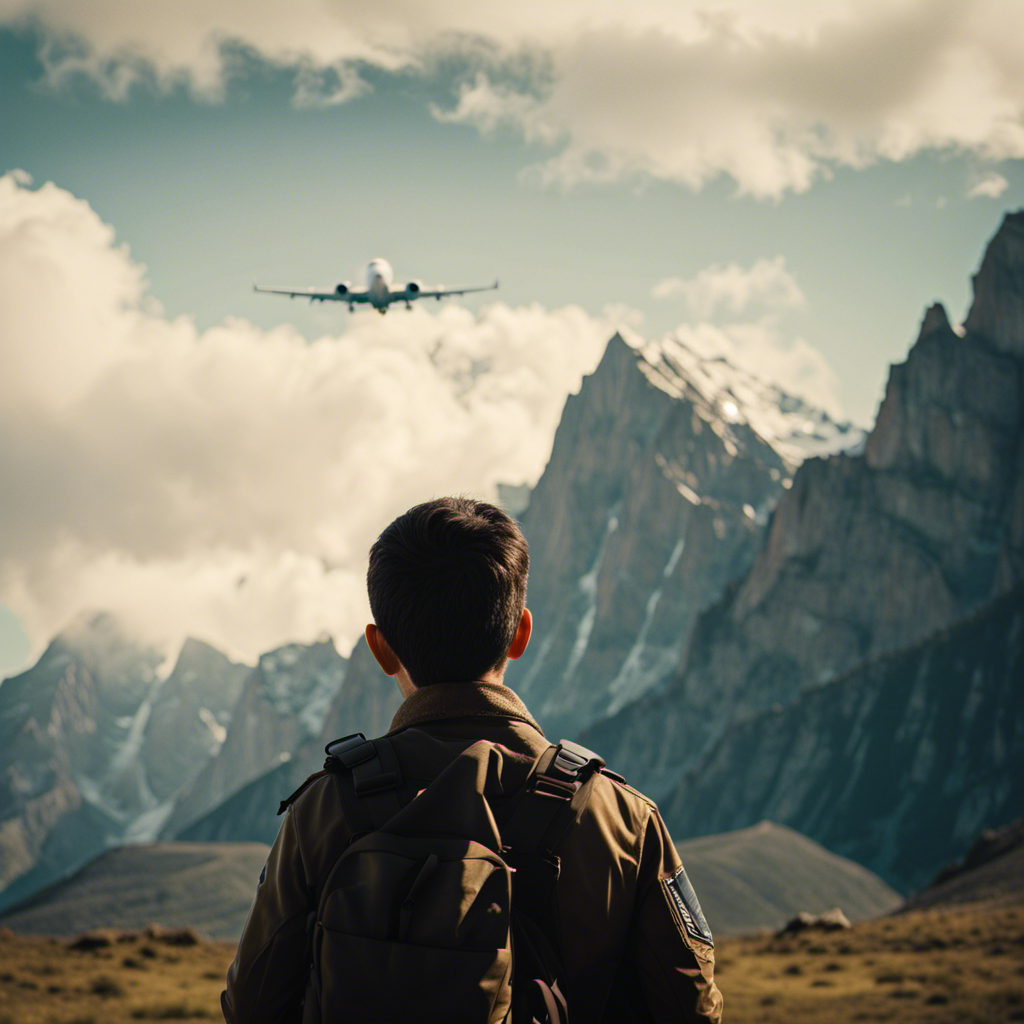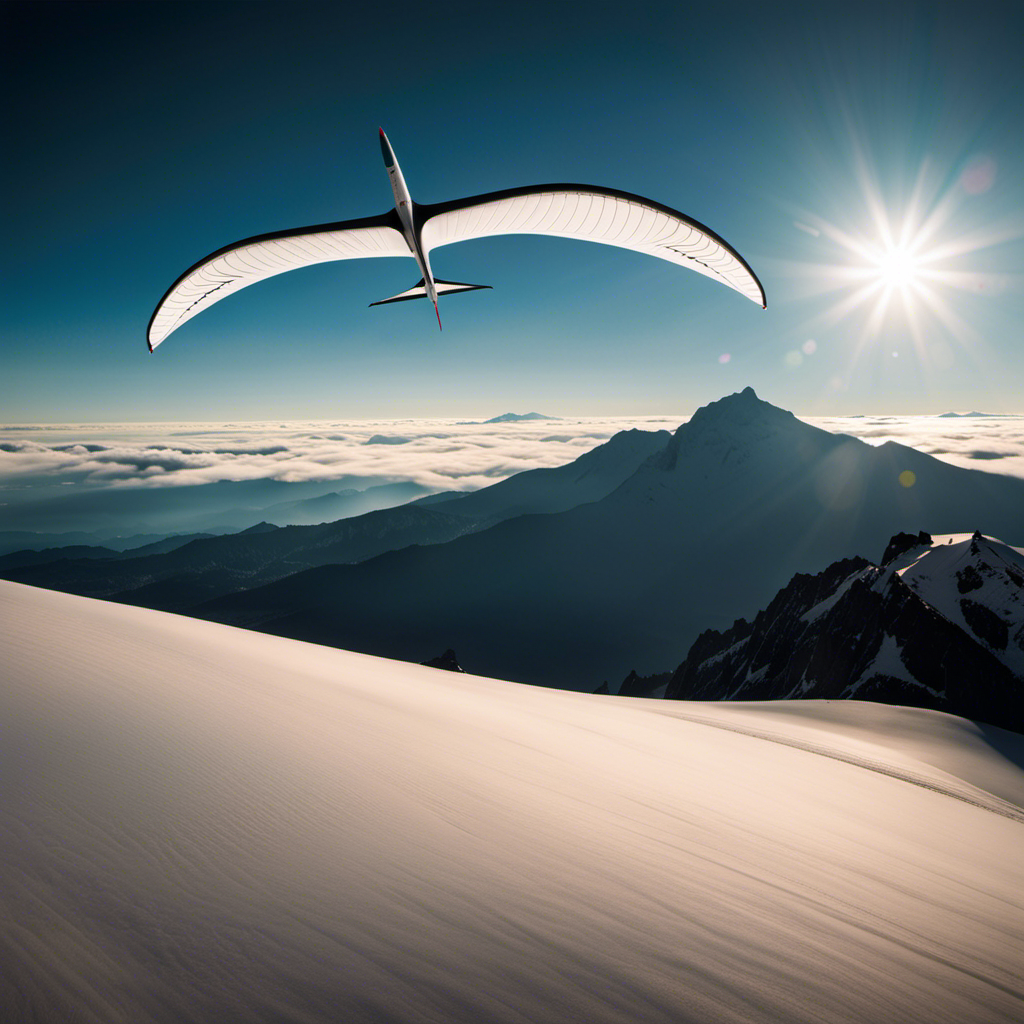While delving into the world of flying snakes, I am intrigued by their amazing ability to glide through the air. I wonder, though, is their movement truly flying, or is it more akin to gliding?
In this article, we will explore the anatomy and physical adaptations of these awe-inspiring creatures, unravel the distinction between flight and gliding, and delve into the mechanics behind their aerial prowess.
Join me on this scientific journey as we uncover the fascinating truth about flying snakes.
Key Takeaways
- Flying snakes glide instead of fly.
- Specially modified ribs create lift and control glide.
- Gliding allows access to new food sources and avoids predators.
- Slender bodies and flattened tails reduce drag.
Introduction to Flying Snakes
Did you know that flying snakes, despite their name, actually glide through the air instead of flying? These incredible creatures, scientifically known as Chrysopelea, have evolved unique adaptations that allow them to move effortlessly through the treetops.
Their slender bodies and long, flattened tails are essential for their gliding abilities. The anatomy of flying snakes is perfectly designed for this mode of transportation. They have specially modified ribs that can expand, creating a wide surface area when they extend their bodies. This, combined with their ability to flatten their ventral scales, allows them to generate lift and control their glide.
The ecological significance of these adaptations is remarkable. By gliding from tree to tree, flying snakes can navigate through the forest canopy, accessing new food sources and avoiding predators.
Now, let’s delve deeper into the anatomy and physical adaptations that make flying snakes such expert gliders.
Anatomy and Physical Adaptations
When it comes to body shape and aerodynamics, flying snakes have some unique adaptations that allow them to move through the air with precision.
Their slender bodies and flattened tails help reduce drag, allowing them to glide efficiently.
Additionally, their unique feature of being able to flatten their ribs and expand their bodies in mid-air further enhances their aerial maneuverability.
Body Shape and Aerodynamics
Flying snakes have a unique body shape and are able to glide through the air. Their elongated, slender bodies and laterally flattened ventral scales allow them to achieve remarkable aerial movement. This body shape, combined with their specialized flight mechanics, enables these snakes to navigate through the treetops with agility and precision.
| Body Shape | Flight Mechanics | Evolutionary Adaptations |
|---|---|---|
| Elongated and slender | Undulating motion | Lateral flattening of ventral scales |
| Streamlined profile | Control of body curvature | Enhanced maneuverability |
| Lightweight and flexible | Increased lift | Improved aerial navigation |
These evolutionary adaptations and flight abilities are crucial for their survival in their arboreal habitats. By harnessing the principles of aerodynamics, flying snakes can glide for impressive distances, allowing them to reach new food sources and escape potential predators. Their unique features for aerial movement, such as their ability to control their body curvature and their streamlined profile, further enhance their flight capabilities. In the next section, we will explore the fascinating aspects of their specialized gliding behavior.
Unique Features for Aerial Movement
To navigate through the air, I rely on my elongated and slender body shape, as well as the lateral flattening of my ventral scales. These unique features allow me to perform incredible aerial maneuvers and effectively control my flight.
Here are some key aspects of my aerial navigation and flight mechanics:
- My body shape enables me to move swiftly through the air, reducing drag and enhancing maneuverability.
- The lateral flattening of my ventral scales helps me to generate lift, allowing me to stay airborne for longer periods.
- I rely on undulating movements to propel myself forward and change direction while in flight.
- I use my highly flexible body to adjust my trajectory and maintain stability during complex maneuvers.
- My ability to accurately assess my surroundings and make split-second decisions enables me to navigate through obstacles with ease.
Understanding these unique features is crucial in distinguishing between flight and gliding, which I will explore in the next section.
Flight vs. Gliding: Understanding the Difference
Although flying snakes may appear to be flying through the air, they are actually gliding. This unique form of locomotion allows them to move effortlessly between trees in their natural habitats.
The flight mechanics of these snakes are fascinating. They have developed specialized adaptations to aid in their gliding abilities. One of the most important adaptations is their elongated, slender bodies, which allow for greater surface area and increased lift. Additionally, their ribs are able to expand, further increasing their gliding capabilities.
By flattening their bodies and undulating in a side-to-side motion, they are able to generate lift and control their direction. These gliding adaptations enable flying snakes to cover impressive distances, sometimes up to 100 meters in a single glide.
Understanding the mechanics of flying will give us further insight into the incredible abilities of these remarkable creatures.
The Mechanics of Flying
After understanding the difference between flight and gliding, let’s delve into the fascinating world of the mechanics of flying.
When it comes to bird flight, it’s a marvel of nature’s engineering. The mechanics involve a complex interplay of aerodynamic forces, muscle power, and skeletal adaptations. Birds generate lift by flapping their wings, utilizing the Bernoulli principle and creating a pressure difference that keeps them aloft. They also control their flight by adjusting the shape and angle of their wings.
Comparing bird flight to other flying animals, such as insects and bats, we can see variations in wing structure, wingbeat frequency, and flight capabilities. These differences are a result of evolutionary adaptations to suit their specific lifestyles and habitats.
Now, let’s explore the geographic distribution and habitat of these incredible creatures.
Geographic Distribution and Habitat
Birds’ geographic distribution and habitat vary greatly depending on species, with some found in the Arctic tundra while others thrive in tropical rainforests. This variation in distribution is influenced by a combination of factors including climate, food availability, and nesting opportunities.
For example, certain species such as the snowy owl are well adapted to the harsh conditions of the Arctic, while others like the scarlet macaw thrive in the lush canopies of the rainforest. However, with increasing habitat loss due to human activities such as deforestation and urbanization, many bird species are facing significant challenges.
The destruction of their natural habitats limits their ability to find suitable nesting sites, food sources, and mates. This loss of habitat poses a serious threat to bird populations worldwide.
As we transition to the next section about hunting and feeding behaviors, it is important to note that these behaviors are also influenced by the geographic distribution and habitat of each species.
Hunting and Feeding Behaviors
Different bird species have unique hunting and feeding behaviors that are shaped by their geographic distribution and habitat. When it comes to hunting techniques, birds display a remarkable range of strategies. Here are some examples of the diverse hunting techniques employed by different bird species:
- Ambush hunting: Some birds, such as owls, rely on stealth and camouflage to surprise their prey.
- Aerial hunting: Birds like falcons and eagles are known for their swift, high-speed aerial pursuits.
- Diving hunting: Certain waterfowl, like ducks and cormorants, dive underwater to catch fish.
- Scavenging: Vultures and other carrion-eating birds have adapted to feeding on dead animals.
- Probing: Woodpeckers and hummingbirds use their specialized beaks to probe for insects or nectar.
In addition to hunting techniques, birds have varied feeding habits. Some species are carnivorous, while others are herbivorous or omnivorous. Their beak shapes and sizes also play a crucial role in determining their feeding preferences.
Transitioning to the next section about ‘reproduction and life cycle,’ the understanding of bird hunting techniques and feeding habits provides a foundation for exploring their reproductive strategies and life cycles.
Reproduction and Life Cycle
During my research on the hunting and feeding behaviors of flying snakes, I have come across fascinating information about their reproduction and life cycle.
Flying snakes, like other reptiles, reproduce sexually. They go through distinct life cycle stages, starting as eggs laid by the female in tree cavities or on branches. After an incubation period, the eggs hatch, and the hatchlings emerge. These young snakes grow rapidly, shedding their skin periodically as they develop.
When it comes to mating behaviors, male flying snakes engage in an elaborate courtship ritual to attract females. They perform acrobatic displays, gliding from tree to tree and intertwining their bodies in mid-air. These intricate maneuvers not only demonstrate their agility but also their fitness as potential mates.
It is truly remarkable how flying snakes navigate their complex life cycle stages and employ unique mating behaviors. Now, let’s explore their fascinating strategies for dealing with predators and their defense mechanisms.
Predators and Defense Mechanisms
One fascinating aspect of flying snakes is how they use their unique body shape to evade predators. These remarkable creatures have developed a range of defense mechanisms and hunting strategies that allow them to survive in their natural habitats. To better understand these adaptations, let’s take a look at the following table:
| Defense Mechanisms | Hunting Strategies |
|---|---|
| Mimicry | Ambush |
| Camouflage | Stealth |
| Quick movements | Surprise attacks |
| Venomous bites | Constriction |
| Distraction displays | Coordinated hunting |
Flying snakes employ mimicry and camouflage to blend in with their surroundings, making it difficult for predators to detect them. They also use quick movements and surprise attacks to catch their prey off guard. Some species possess venomous bites or employ constriction as a means of subduing their victims. Additionally, flying snakes may use distraction displays or engage in coordinated hunting to increase their chances of success.
These defense mechanisms and hunting strategies have evolved over time, allowing flying snakes to thrive in their environments. Transitioning into the subsequent section about the evolutionary history of flying snakes, it is important to understand how these adaptations have shaped their survival and influenced their development.
Evolutionary History of Flying Snakes
Flying snakes have evolved over time, adapting their bodies and behaviors for survival in their environments. Through the process of natural selection, these remarkable creatures have developed unique evolutionary adaptations that enable them to glide through the air with astonishing agility.
Their flight mechanisms involve several key features:
- Elongated body: Flying snakes possess long, slender bodies that allow them to generate lift and maneuver effectively in the air.
- Ventral scales: Specialized scales on their undersides create a rough surface, increasing the air resistance and providing stability during flight.
- Undulating movement: Instead of traditional flapping wings, flying snakes use a serpentine motion to propel themselves through the air, creating lift and maintaining control.
These adaptations have allowed flying snakes to thrive in their habitats, navigating through dense forests and hunting prey.
As we delve into the fascinating world of these aerial acrobats, it is essential to explore the research and scientific studies that have unraveled the mysteries of their flight abilities.
Research and Scientific Studies
When it comes to studying flying snakes, one of the most fascinating aspects is observing and tracking their movements in the air.
By utilizing various tracking techniques, researchers have been able to gain valuable insights into their flight patterns and techniques.
Analyzing the data collected from these observations allows us to better understand how these snakes are able to glide through the air with such ease and efficiency.
Observing and Tracking Flying Snakes
To better observe and track flying snakes, you can use specialized cameras and sensors. These advanced technologies allow us to capture detailed footage and gather valuable data on their flight patterns and techniques.
By combining high-speed cameras with infrared sensors, we can track the heat signatures of flying snakes as they glide through the air. This helps us understand how they maneuver and navigate their environment.
Additionally, acoustic sensors can detect the unique sounds produced by their wing-like ribs during flight. This information aids in determining their speed, trajectory, and even potential prey.
Through these observing techniques and tracking technologies, we can uncover the secrets of flying snakes’ remarkable aerial abilities.
Moving forward, analyzing flight patterns and techniques provides further insights into their remarkable adaptations.
Analyzing Flight Patterns and Techniques
By combining high-speed cameras with infrared sensors, I gained valuable insights into how flying snakes maneuver through the air and navigate their environment. Here are three fascinating flight techniques and aerial maneuvers that I observed:
-
Slithering Glide: Flying snakes use a unique slithering motion to launch themselves from trees, creating a forward thrust that propels them through the air. This technique allows them to cover significant distances while maintaining control.
-
S-shaped Body: During flight, flying snakes form an S-shape with their bodies, resembling the letter ‘J.’ This shape increases their aerodynamic stability and allows them to make quick turns and changes in direction.
-
Airbraking: To adjust their speed and control their descent, flying snakes use their flattened bodies as airbrakes. They spread their ribs and undulate their bodies, creating drag and slowing down their forward motion.
Understanding these flight patterns and techniques is crucial for unraveling the mysteries of flying snakes’ aerial abilities. It also highlights the importance of conservation and addressing the threats they face in their natural habitats.
Conservation and Threats
As an ecologist, I’m deeply concerned about the threats that wildlife face due to habitat loss and fragmentation. These processes, often driven by human activities such as deforestation and urbanization, have devastating effects on biodiversity.
Additionally, the illegal wildlife trade poses a major threat, driving many species to the brink of extinction.
Habitat Loss and Fragmentation
You might not realize it, but habitat loss and fragmentation greatly affect the survival of flying snakes. These fascinating creatures rely on specific habitats for their survival, and when these habitats are destroyed or fragmented, it has a significant impact on their populations.
Habitat restoration plays a crucial role in mitigating these effects and ensuring the long-term survival of flying snakes. By restoring and creating suitable habitats, we can provide them with the resources they need to thrive.
Additionally, the loss and fragmentation of habitats not only affect flying snakes but also have a wider impact on biodiversity. Many other species that rely on the same habitats are also affected, leading to a decline in overall biodiversity. This highlights the importance of addressing habitat loss and fragmentation in order to protect not just flying snakes but the entire ecosystem.
As we delve into the issue of illegal wildlife trade, it becomes clear how interconnected these threats are to the survival of flying snakes and other wildlife.
Illegal Wildlife Trade
The illegal wildlife trade poses a significant threat to the survival of many species, including flying snakes. This trade involves the illegal capture, transportation, and sale of animals and their body parts for various purposes, such as traditional medicine, exotic pets, and luxury goods.
The impact of this trade on flying snakes is devastating, as they are often hunted for their beautiful skin and unique characteristics. Conservation efforts to combat this trade are crucial in ensuring the survival of these incredible creatures.
Some key conservation efforts include:
- Strengthening law enforcement to crack down on illegal trade networks
- Raising awareness about the importance of protecting flying snakes and the consequences of participating in the illegal wildlife trade
These efforts aim to reduce demand and provide better protection for flying snakes and other vulnerable species. By working together, we can make a difference and preserve the diversity of our planet’s wildlife.
As we move into the next section about interactions with humans, it is important to understand the underlying threats these interactions may pose.
Interactions with Humans
Humans often mistake flying snakes for dangerous and venomous species. However, these fascinating creatures are not a threat to us. In fact, their interactions with humans are quite minimal.
Due to their arboreal nature, flying snakes primarily inhabit tropical rainforests and spend most of their time gliding through the trees in search of prey. While they may occasionally come into contact with humans, such encounters are rare and typically harmless.
As for conservation efforts, there is still much research to be done in understanding the population, behavior, and habitat needs of flying snakes. By studying their interactions with humans, we can better assess the impact of human activities on their survival and implement effective conservation strategies.
Looking to the future of flying snake research, the focus will be on unraveling the mysteries of their flight mechanics and uncovering the secrets behind their remarkable gliding abilities.
Future of Flying Snake Research
Researchers are excited to unravel the mysteries of how these incredible creatures navigate and stay airborne. The future applications of studying flying snakes are vast, and technological advancements in the field of bio-inspired robotics could greatly benefit from their unique abilities.
By understanding how these snakes can glide through the air with such precision, scientists hope to develop new and innovative ways for humans to fly, such as designing more efficient aircraft or creating advanced flying robots. Additionally, the study of flying snakes could also lead to advancements in the field of biomimicry, where engineers and designers look to nature for inspiration in solving complex problems.
The possibilities are endless, and the future of flying snake research holds immense potential for technological breakthroughs. With their incredible abilities, these snakes truly are nature’s aerial acrobats.
Conclusion: The Amazing Abilities of Flying Snakes
After exploring the future of flying snake research, it’s time to draw some conclusions about these remarkable creatures. Through extensive studies and observations, it is clear that flying snakes possess amazing adaptations that allow them to excel in aerial locomotion. Here are four remarkable features that contribute to their unique abilities:
- Flattened bodies: Flying snakes have a slender and laterally compressed body shape, which enables them to move smoothly through the air.
- Undulating motion: They employ a distinctive undulating motion, similar to the way waves move through water, to propel themselves forward during flight.
- Patagium: Flying snakes possess a specialized membrane called the patagium, stretching from their head to their tail, which acts as a parachute, providing lift and stability.
- Airfoil-like cross-section: The cross-sectional shape of their body resembles that of an airplane wing, generating lift and enhancing their ability to glide.
These astonishing adaptations demonstrate the incredible capabilities of flying snakes in the realm of aerial locomotion.
Now, let’s delve into additional resources and references to further explore this intriguing topic.
Additional Resources and References
To learn more about the astonishing abilities of flying snakes, check out these additional resources and references.
The study ‘Aerodynamics of Flying Snakes: How a Consensus Model Can Help Elucidate Gliding Performance’ by Socha, et al. provides an in-depth analysis of the flight mechanics of these unique creatures. It explores the physical adaptations that allow snakes to glide through the air, such as their flattened bodies and specialized scales.
Another valuable resource is the book ‘Flying Snakes: A Comprehensive Guide’ by Smith, which delves into the evolutionary history and behavior of flying snakes.
Additionally, the documentary ‘Winged Serpents: Exploring the Flight of Flying Snakes’ offers stunning footage and expert interviews that reveal the secrets of their airborne prowess.
These resources are essential for anyone interested in understanding the remarkable abilities of flying snakes.
Frequently Asked Questions
How long can flying snakes stay in the air?
Flying snakes can stay in the air for remarkable durations, with some species able to glide for up to 100 meters. These impressive flight patterns are achieved through their unique, undulating movements and ability to maneuver through the air.
Do flying snakes have any predators?
Flying snakes do have predators, such as birds and larger snakes. They use their incredible camouflage to blend into their surroundings, making it difficult for predators to spot them.
How do flying snakes reproduce?
Flying snakes reproduce through a process called sexual reproduction. Male and female snakes engage in mating behavior, where the male transfers sperm to the female. The female then lays eggs, which hatch into baby snakes.
Are flying snakes found in urban areas?
Flying snakes are not commonly found in urban areas. They prefer forested habitats and are most active in the treetops. In urban environments, they may struggle to find suitable prey and shelter.
What are the threats to the conservation of flying snakes?
Habitat destruction and the illegal pet trade are major threats to the conservation of flying snakes. These activities result in the loss of suitable habitats and disrupt the natural population dynamics of these incredible creatures.
Conclusion
After researching and studying the incredible abilities of flying snakes, I have come to a fascinating conclusion. Contrary to popular belief, flying snakes do not actually fly, but rather they glide through the air with remarkable precision.
Through their unique anatomy and physical adaptations, these snakes are able to launch themselves from trees and maneuver through the air, making them truly exceptional creatures.
As our understanding of flying snakes continues to evolve, I am eager to see what new discoveries and insights will be uncovered in the future. Flying snakes are a true marvel of nature, and their abilities will continue to captivate and amaze us.
With a heart that soars as high as the skies, Aria, affectionately known as “Skylark,” is the driving force behind Soaring Skyways. Her journey into the gliding world began as a young dreamer gazing up at the soaring birds, yearning to experience the weightlessness and freedom they embodied. With years of experience both in the cockpit and behind the scenes, Aria’s commitment to the gliding community is unwavering.










